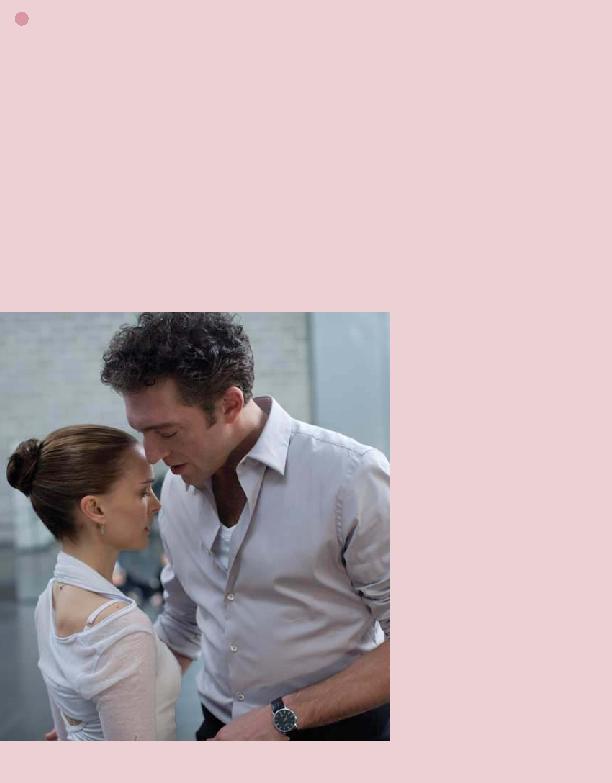
mine asked me to stay behind to take his
picture with Darren, and that created the
opportunity to chat as we walked out of the
building," Heyman recalls. "By the end of
the conversation, he was like, `Why don't
you come work for me?' So I contacted his
producing partner, who told me, `I don't
know what he's talking about. We don't
have any jobs.'"
director focused on postproduction for The
Fountain. Instead of finishing NYU, Heyman
went to work for Protozoa, Aronofsky's pro-
duction company. "After The Fountain ended,
he promoted me to be his development guy,
and then on The Wrestler, he said, `Why don't
you develop this thing with Rob Siegel?' There
had been just one draft of it by that point."
writer to will the screenplay into what
Aronofsky envisioned. That film emerged
through trial and error over the course of 25
to 35 drafts, with Aronofsky constantly test-
ing the progress with new questions and
ideas, while Heyman served as the go-be-
tween (Heyman actually earned a producer
credit on The Wrestler for his efforts).
that process, and Black Swan is no different,"
Heyman explains. "It's karma. We did it to
Rob, and then I had it done to myself, which
amounts to just a lot of very deep conversa-
tions with Darren. Basically, you write a draft,
and he'll say, `I don't think that works,' and
he'll throw an idea out that will fundamen-
tally change it, and you'll just have to go
with it. It's not necessarily little page notes,
little tweaks, either. It can be thinking it and
rethinking it and trying and trying until it
like, `Yes, this is a movie I can understand.
This is a movie I can make,' and then you
can start to finetune."
one of their conversations, Heyman men-
tioned that he wanted to get back into writ-
ing, so Aronofsky suggested resurrecting the
idea of the story set in the ballet world. At
that point, work on Heinz's and McLaugh-
lin's scripts had stalled, and though Heyman
was familiar with the project as part of his
development role, the job essentially called
for him to start over.
man says. "John's draft had been sitting there
for a while. It had probably been a couple
years since we had last engaged with it, and
I never looked at The Understudy once when
I was doing my writing. That was never part
of the conversation."
been distilled into certain guiding ideas --
namely, the notion of Nina's double and the
essential All About Eve-style dynamic of a
woman in a role competing with another
woman who wants that same role.
"Swan Lake," since that's obviously an ele-
ment that you love and want to be part of
this film, and instead of it just being one as-
pect of the movie, why don't we make that
the movie?'" explains Heyman, who sug-
gested that Nina's arc follow that of the
princess in Tchaikovsky's story. "That's as far
as we got in our conversations about where
we could go with this thing. So the start of
my process was outlining a version of the
story that really used `Swan Lake' as its start-
ing-off point, so all the characters, the swan
transformation -- all of that is ultimately
built out of the ballet."
into white swans. The most beautiful of the
birds, Odette is discovered by a handsome
prince, who pledges his love just before the
sorcerer steals her away. The next day, the
sorcerer tricks the prince by introducing his
daughter, Odile, who is dressed in black in
the play but typically performed by the same
dancer. Deceived, the young prince pledges
to marry this Black Swan instead. Upon real-